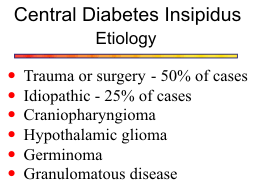A Young woman presented in Opd for her generalized weakness.
There is no history of
associated diseases and no history given
for
Taking any medication. On
investigation , She was found to be Low
Potassium( 2.2) , Cl 110,
Hco3 27, BUN 16, and Serum Creatinine 1.0.
Her urine revealed K 40, Cl
82, Na 26.
Her Blood Pressure 110/70.
What is the most likely
cause?
.
Surreptitious
vomiting
Diuretic abuse
Diuretic abuse
Bartter syndrome
Prim.
Hyperaldosteronism
Answere:
The most likely is Diuretic abuse but it is
very difficult to differentiate it from Bartter/
As both are manifested by
hypochloremic hypokalemic met. Alkalosis with high urinary CL. A urine drug
screen for diuretic can help. As Bartter is rare so we say it is diruretic
abuse.
